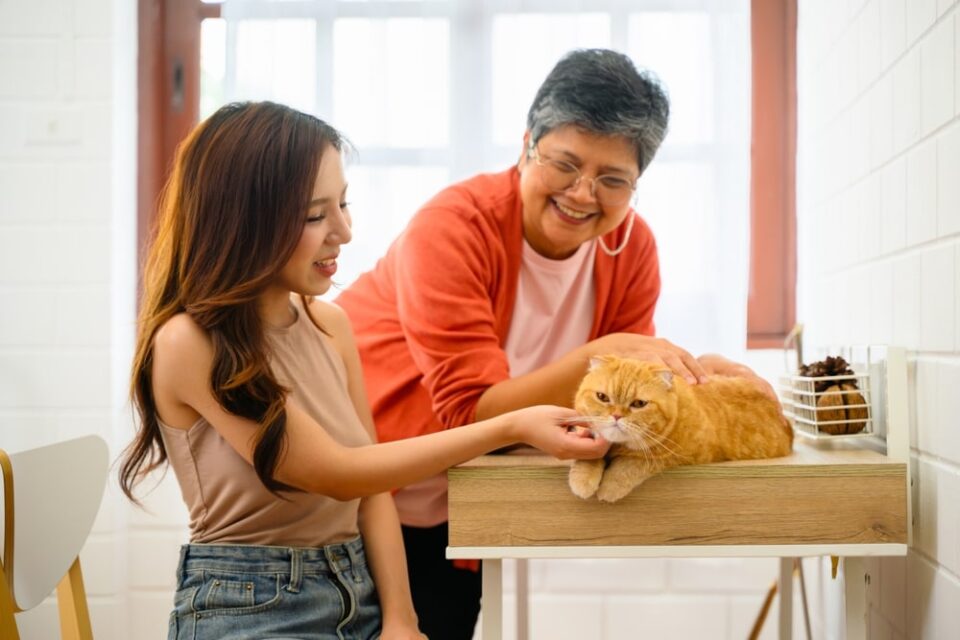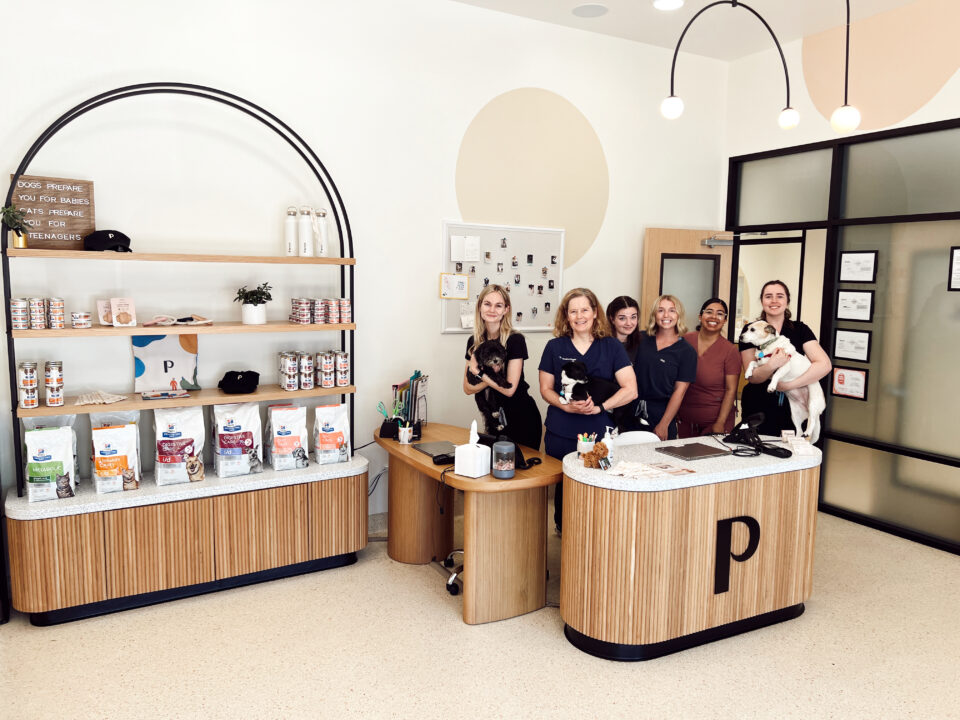Cats
5 min read
Mastering the Art: How to Socialize Your Cat
Published on Sep 20, 2023

We love cats for their purrs, their playful pounces, and those moments when they curl up beside us, giving us a rare glimpse into their softer side. But what about those cats who seem to prefer the shadows, those who hiss at the mere thought of a new person? No need to worry, this guide will walk you through the secrets of how to socialize a cat.
Cat socialization is the art of turning that aloof or feral pet into a friendly feline companion by helping your cat become comfortable and confident in various situations, around different people, and with fellow pets.
Why is Cat Socialization Important?
Before we dive into the nitty-gritty of how to socialize a cat, let’s pause for a moment to appreciate why it’s so vital.
Both cat and puppy socialization is crucial for fostering a happy and harmonious bond between companions and their human caregivers. It helps pets better adapt to new environments, promotes bonding, and decreases behavioral issues.
But it’s not just about convenience; it’s about your cat’s mental and emotional well-being. Socialization reduces stress, boosts confidence, and promotes a harmonious pet-human relationship. It’s the key to a happy and healthy life for your feline friend.
Better Adaptation to New Environments
Imagine adopting a new cat and seamlessly integrating it into your home. Cat socialization helps cats adapt to new spaces, reducing their stress and ensuring a smoother transition.1 It’s like giving them a cozy welcome mat to your world.
Enhances Pet-Human Relationship
A well-socialized cat is a joy to be around. They form strong bonds with their owners, offering companionship, affection, and trust. You become their safe haven, their confidant – a bond that’s priceless.
Reduced Behavioral Issues
Ever heard of a cat scratching everything in sight or hissing at every new person? Socialization can mitigate problems from aggression to territorial behavior, especially when you start during kittenhood. It’s like an insurance policy for a harmonious household because cats raised alone are more prone to aggressive behavior toward both their owners and other pets.2
When to Start Socializing Your Cat
The Kitten Stage
You’ve got a tiny, adorable kitten? Congratulations, you’re in the prime socialization period! Kitten socialization is typically successful between 2 and 9 weeks.3 During this time, kittens are more receptive to new experiences and less likely to develop fear or aggression toward people and other animals.4 The earlier you start, the better!
Socialization in Adult Cats
But what if you’ve adopted an adult cat, or your older kitten missed the boat? Fret not, it’s never too late to begin the socialization journey. Cats of all ages can benefit from this process, it just may take more time and patience for an older cat.
Core Principles of Cat Socialization
Building Trust
Imagine meeting a new person who instantly offers you a treat – trust builds from small, positive experiences like these. Similarly, your unsocialized cat needs baby steps to trust new people and situations.
Positive Reinforcement
Positive reinforcement helps cats associate human contact with comfort and food.5 Treats, toys, and praise – these are your weapons of choice in the socialization battle. Try rewarding your cat for positive behavior with their favorite indoor cat toy, and watch them flourish.
Consistency and Patience
Remember, Rome wasn’t built in a day, and neither is a well-socialized cat. Cats are individuals, so each one will move at its own pace and comfort level during the socialization process. Be consistent in your efforts, and patience will be your guiding star.
Step-by-Step Guide to Cat Socialization
Day 1-7: Initial Exposure
Begin with a gentle introduction. Let your cat get used to the new people, animals, or environment at their own pace. Help them dip their furry toes into the socialization pool, before jumping all the way in.
Week 2-3: Hands-on Interaction
Now, it’s time to get hands-on. Play, pet, and give treats to create positive associations. It’s like turning playtime into a party, and everyone’s invited.
Month 1 Onward: Advanced Social Activities
As your cat gains confidence, expose them to the big wide world – car rides, outdoor adventures, or visits to the vet. Each new experience is a stepping stone to a more social cat.
Common Mistakes and How to Avoid Them
Forcing the Cat
Trying to force socialization can increase your cat’s stress and aggression. It’s a recipe for disaster. Remember the process is unique for each cat, so let your cat set the pace based on its comfort level.
Inconsistency
Cats thrive on routine and predictability, so consistency is key to the process. Make socialization a part of your daily routine, working with your pet a little more each day. Remember, it’s about creating positive associations, not rushing through the process.
Neglecting Signs of Stress
Recognizing stress signs in your cat is crucial. Tail flicking, flattened ears, or excessive hiding are common signals of an overwhelmed or stressed cat. If you see them, slow down and reassess.
Case Study: Successful Cat Socialization Stories
6
Let’s draw inspiration from real-life cat owners who’ve triumphed in the socialization arena. Their stories prove that with dedication and love, anything is possible.
Allie: The Socialized Family Cat
Meet Allie, a playful kitten who’s grown into an affectionate and attention-greedy cat. Because Allie’s family held and petted her since she was only a few days old, she is comfortable around them and loves to cuddle and play with them today.
Robin: The friendly rescue cat
Unlike Allie, Robin was a shy rescue cat before her new family started the socialization process. After spending more time with her new owners, Robin’s nerves have faded away and she comfortably approaches her family for affection.
Jay: The learning community cat
Socialization doesn’t just work for family cats. Jay is a community cat who’s still learning to be comfortable around his regular caregiver. At first, he would run away when she tried to feed him, but her use of cat food as a positive reinforcement has helped decrease Jay’s anxiety when he sees a person. With a little more time and patience, Jay will likely be greeting his caregiver with excited meows.
How Papaya Veterinary Care Can Help
Wellness Exams
Regular wellness exams are not just for your cat’s physical health. They also monitor their social development. Papaya Veterinary Care ensures your cat is on the right socialization track.
Support for Any Unexpected Behavioral Emergencies
Life is full of surprises, and sometimes, so is cat behavior. Papaya Veterinary Care is your lifeline in case of unexpected socialization challenges. If you see any changes in your cat’s behavior, set up an appointment for a visit, to rule out any possible underlying health issues that might be the cause.
Sources:
- “The Cat Socialization Continuum: A Guide to Interactions between Cats and Humans.” Alley Cat Allies, www.alleycat.org/resources/cat-socialization-continuum-guide/. Accessed 14 Sept. 2023.
- “Feline Behavior Problems: Aggression.” Cornell University College of Veterinary Medicine, 23 Aug. 2023, www.vet.cornell.edu/departments-centers-and-institutes/cornell-feline-health-center/health-information/feline-health-topics/feline-behavior-problems-aggression
- Ellis, Sarah. “Kitten Socialization.” Vetstream.com. https://icatcare.org/app/uploads/2020/02/kitten-socialization.pdf. Accessed Sep. 14, 2023.
- Turner DC. “The Mechanics of Social Interactions Between Cats and Their Owners.” Front. Vet. Sci., 2021 Mar. 31, https://www.frontiersin.org/articles/10.3389/fvets.2021.650143/full. Accessed Sep. 14, 2023.
- “The Cat Socialization Continuum: A Guide to Interactions between Cats and Humans.” Alley Cat Allies, www.alleycat.org/resources/cat-socialization-continuum-guide/Accessed 14 Sept. 2023.
- “The Cat Socialization Continuum: A Guide to Interactions between Cats and Humans.” Alley Cat Allies, www.alleycat.org/resources/cat-socialization-continuum-guide/Accessed 14 Sept. 2023.














